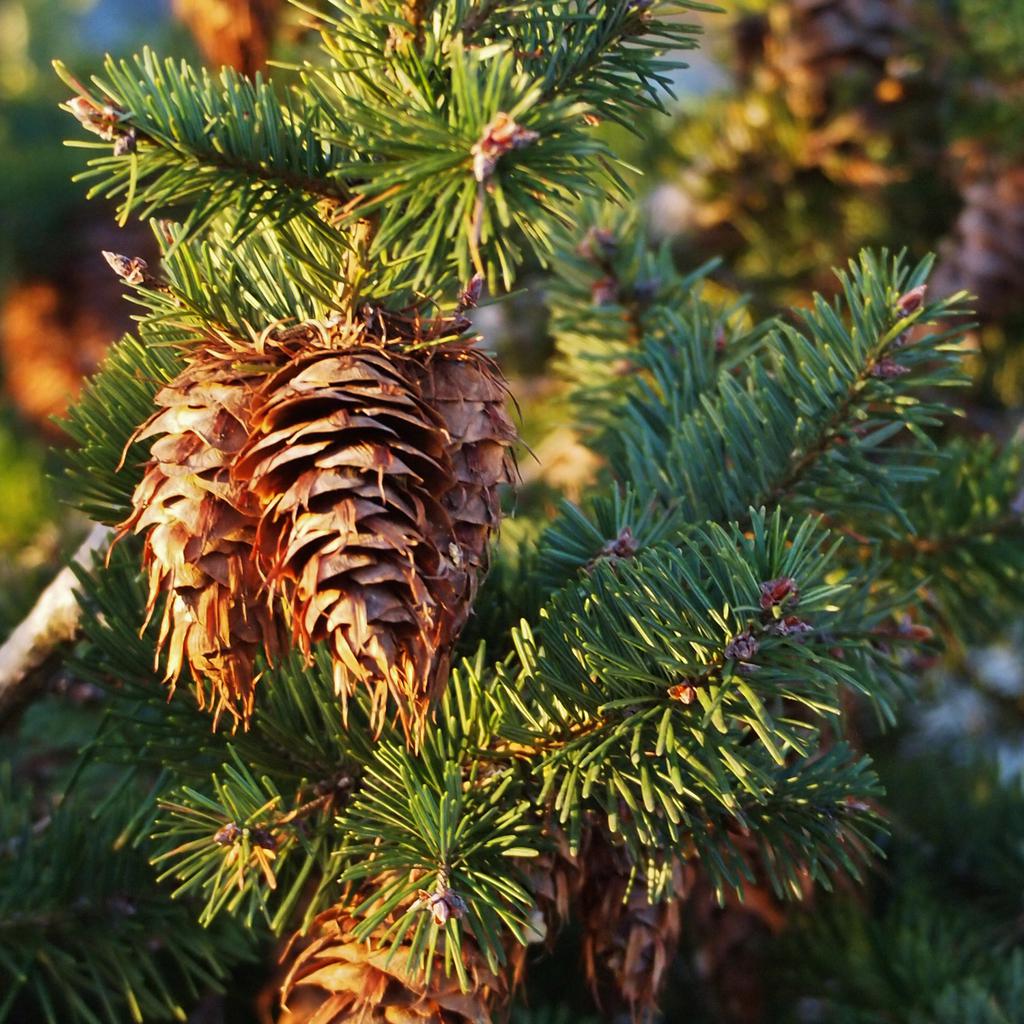Oregon Pine
Douglas-firs are native to the Rocky Mountains and the Pacific Northwest. Their needles are flat with a pointed tip, lime green on top and paler below. The needles are arranged in a spiral so they appear to stand out around the twig. The bark becomes very thick and deeply grooved with age with dark reddish-brown ridges. The cones (3-4 in long) have three-forked bracts between the scales.
Coast Douglas-firs are found along the Pacific Northwest coast and are taller (up to 250 ft) and faster-growing than Rocky Mountain Douglas-firs (115-150 ft) found in the western mountains.
Douglas-fir seeds provide food for small mammals such as chipmunks and squirrels, while many songbirds eat the seeds right out of the cones. Bears eat the sap.
Did you know? Douglas-firs aren't a fir tree at all - hence the hyphen in their name. They're a False Hemlock.
See Also: Balsam Fir, Common Juniper, Engelmann Spruce, Jack Pine, Lodgepole Pine, Rocky Mountain Juniper, Spruce, Tamarack, Western Hemlock, Western Larch, Western Redcedar, Whitebark Pine







